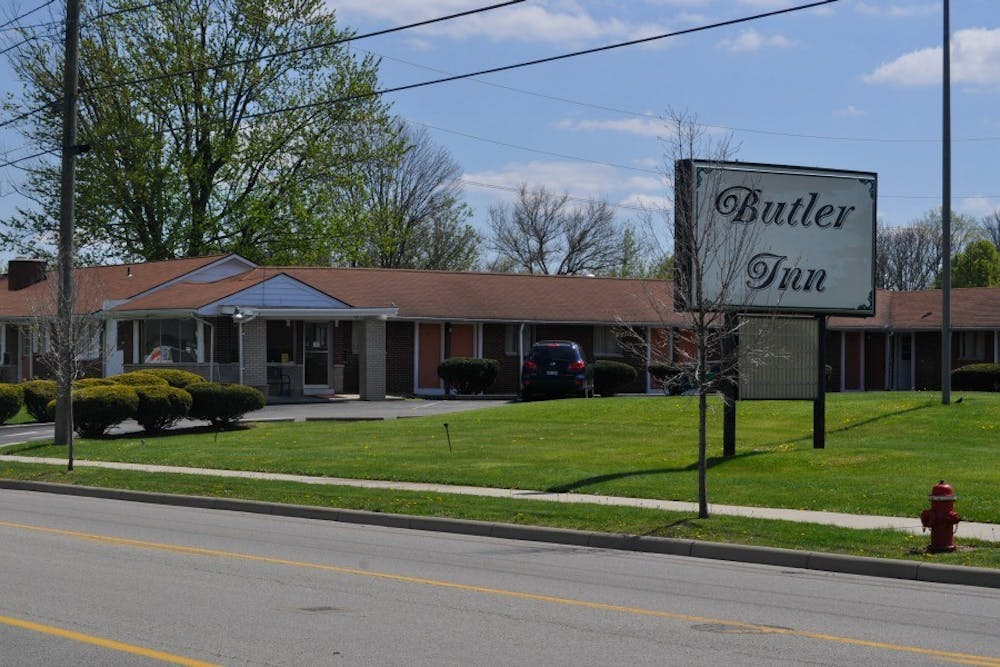By Brett Milam, Online Editor
One-pot cook labs, like the one found by Oxford Police Department (OPD) April 16 at the Butler Inn hotel, are the the new face of methamphetamine addiction.
In this Butler Inn incident, James R. Bowman and Crystal N. Dieffenbach, both 24, were arrested and charged with illegal manufacture of drugs and illegal assembly or possession of chemicals for the manufacture of drugs.
Sometimes referred to as "shake and bake," this one-pot cook method combines anhydrous ammonia, the pseudoephedrine tablets, water and the reactive metal (like Lithium) into one container. After the container is used, what remains is the poisonous brown and white-like sludge, according to the Department of Environment Protection in West Virginia.
Such cooks also contribute to Ohio's reputation as one of the leading states in the country for seized labs.
In 2015, there have been 61 such seizures in Ohio thus far, according to the Missouri State Highway Patrol (MSHP) using numbers from the National Clandestine Laboratory Seizure System database.
According to MSHP, seizures entered into the database include operational laboratories, chemical/equipment/glassware seizures and dumpsites.
The Butler Inn seizure by OPD would fall under the second category, as they found a Gatorade bottle containing a red sludge for a "one-pot cook," according to an earlier report in The Miami Student.
John Detherage, fire chief of the Oxford Fire Department, said they were at the scene and that they decontaminated Bowman and Dieffenbach.
Detherage also said they assisted the Regional Narcotics Unit by providing fire suppression capabilities and lighting while they removed the chemicals from the buildings and neutralized them.
They did not, however, decontaminate the scene.
Mark Lawson, the property manager at the Butler Inn, stated the room wouldn't be operational for at least 30 days. Even though the "shake and bake" method would contaminate the room, it's not as bad as if it were a hot cook.
Enjoy what you're reading?
Signup for our newsletter
"We stripped the carpet, padding and we're throwing away the bedding," he said. "There's no mandate in Ohio for what's required to clean it up."
Lawson is correct. According to the Ohio Department of Health (ODH), they only offer voluntary cleanup guidelines for "cleanup contractors, industrial hygienists, policy makers and others involved in meth cleanup."
No national standards exist either. There's only the Methamphetamine Remediation Research Act, passed in 2007, which requires the U.S. Environmental Protection Agency to establish those voluntary guidelines.
Moreover, a traditional cook would spread meth vapor residue throughout the room, whereas the one-pot cook decreases the amount of chemicals involved, according to ODH.
Lawson said he was also busy with other reservations for Miami.
While meth is sparsely used when taking the longview of national numbers - just around .02 to .03 percent monthly users since 1999, according to the Drug Policy Alliance - the regional breakdowns help bring the issue into better focus.
Neighboring Indiana leads the country this year in reported seizures with 107 and Illinois behind it with 72.
Ohio coming in at number three for seizures this year holds with similar patterns in past years. In 2014, Ohio ranked fourth with 913 seizures. The year prior, Ohio came in at fourth again with 1,010 seizures.
Only four years ago, Ohio had a reported 364 seizures.
The rise in meth lab seizures can be attributed to these smaller, more mobile "one-pot" labs, according to the White House's Ohio Drug Control Update report.
Along with the permeation of one-pot cooks, meth's availability ranks a seven on a scale of 10 for ease, according to a report from the Ohio Department of Mental Health and Addiction Services.
"You need to know someone to find meth. It would take two phone calls," a participant in the report said.
The problem is that meth's use is most concentrated in the rural areas among mostly white, young people, according to community professionals and law enforcement officials.
"We're not hearing too much about meth; it seems more prevalent in the rural areas and across the border [in Kentucky]," a law enforcement official in the report said.
In the 2011 fiscal year, a plethora of Ohio coalitions, officially known as Drug Free Communities (DFC), received grants from the Office of National Drug Control Policy.
One such DFC is the Butler County Coalition for Healthy, Safe and Drug Free Communities.
Overall, in fiscal year 2010, Ohio received over $200 million in such grants for things like school-based drug testing programs, reintegration of ex-offenders and focusing on high intensity drug trafficking areas.
Bowman and Dieffenbach were released April 24 by court order.




